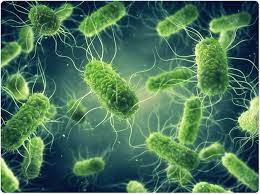Please click the frequently asked questions below for further information and IPC precautions required:
-
What is Salmonella?
Salmonella spp. is a bacterium of which more than 2000 serotypes have been identified. Salmonella can cause food poisoning with most disease caused by two serotypes, S. Enteritidis and S.Typhimurium.

-
Why is this information important?
If NIAS staff are aware that the patient has a suspected or confirmed case this should be communicated to the Control Room (Emergency or Non-emergency as appropriate) and the staff in the receiving unit when transferring the patient to ensure effective patient care and management.
-
How is it spread?
Most cases of Salmonella infection transmission occurs by the ingestion of contaminated food (most commonly poultry, red meat, raw eggs and dairy products and salad products) or via faecal contamination from an infected person or animal.
Person-to-person spread of Salmonella is uncommon but can be transmitted if direct contact with contaminated vomit or feaces.
Patients should continue to be considered infectious while symptomatic.
-
What are the symptoms of Salmonella?
Symptoms usually includes:
- Diarrhoea
- Fever
- Stomach cramps
- Nausea and vomiting may accompany the diarrhoea
Symptoms usually start within 6 hours–6 days after infection and last 4–7 days.
-
IPC Precautions
- Contact precautions should be used.
- Hand Hygiene should be completed as per the 5 moments in line with usual practice with Soap and Water
- Eye protection should be risk assessed and worn if any risk of splashes.
- Gloves and Aprons should be worn.
- The patient should be transported via ambulance with no other patients present.
- Laundry should be treated as contaminated, placed into an alginate bag and placed into a red laundry bag.
-
What cleaning is required?
All equipment and the ambulance should have an in-between patient clean paying particular attention to touch points.
-
Do staff need any prophylaxis or follow up?
If staff have been exposed to a confirmed or suspected case of Salmonella they should remain vigilant for any symptoms but there is no active follow up required.
If staff become symptomatic they should remain off work until 48 hours asymptomatic (72 hours if food handling).




